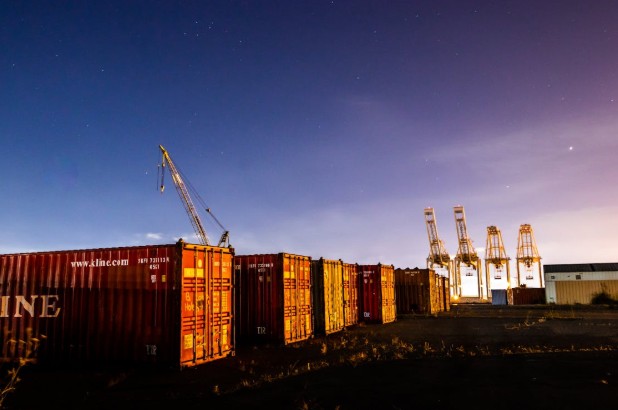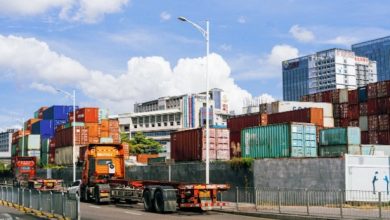The strength of a company’s buildings, equipment, vehicles, and storage systems influences the consistency of its workflow and the dependability of its service. When physical assets are chosen well, maintained with intention, and organized with clarity, the entire operation gains a sense of structure that supports long-term stability. Assets shape everything from how teams move through tasks to how managers plan for future growth.
Modern businesses operate in environments that change unexpectedly, and physical assets often determine how smoothly a company can adapt. A well-organized layout, reliable tools, and solid operational spaces help anchor the business when pressures rise or schedules tighten. Once the physical side of a business stays strong, the rest of the operation gains steadiness that carries through both routine and demanding periods.
Practical Space Solutions
Space plays a critical role in supporting the flow of daily work. Whether the company handles products, materials, documents, or equipment, well-planned space keeps everything accessible and easy to manage. Storage containers are a worthwhile option in this area because they offer controlled, dedicated space without complicating the property layout. They protect items from weather, keep operations organized, and give the business a reliable extension of its existing footprint.
Purchasing storage containers can be an advantageous long-term decision. Containers can hold inventory, seasonal equipment, or tools without crowding the main facility. Companies expanding their inventory space often choose storage containers for sale as a practical long-term option. Their durability and simplicity help the company maintain a clear, functional setup that supports stability over time.
Equipment Reliability Patterns
Equipment reliability shapes the flow of work inside every department. Machinery that starts without hesitation, tools that function consistently, and devices that respond as expected allow staff to stay focused on their tasks. Reliable equipment cuts down on disruptions and keeps operational habits predictable. This stability strengthens scheduling, planning, and daily coordination across the workplace.
Consistency becomes even more important when production demands rise. Equipment that performs steadily prevents sudden pauses in output and avoids unexpected strain on the team. Patterns of reliability also help managers understand when repairs or servicing are needed, which supports safer and steadier operations.
Asset Lifespan Planning
All physical assets follow a natural lifecycle, and planning around that timeline helps the business operate with clarity. As leaders track the age, condition, and expected performance window of their assets, they make decisions with fewer surprises. This planning supports budget stability and gives the company time to prepare for replacements.
A clear understanding of asset lifespan reduces operational stress. Instead of reacting to sudden failures, managers can schedule upgrades during slower periods or before an asset reaches a critical point.
Fleet Condition and Readiness
A company’s fleet influences how well it meets schedules, makes deliveries, or reaches clients. Vehicles in good condition support consistent transit times and dependable service. Regular attention to maintenance keeps the fleet available when needed and reduces unexpected interruptions. The readiness of these vehicles has a direct impact on how smoothly the business moves throughout the day.
When a fleet stays reliable, teams gain confidence in their routes and timelines. Drivers can work without second-guessing the condition of their vehicles, and managers can coordinate tasks with fewer disruptions. A stable fleet helps the business maintain steady operations across both routine and high-demand periods.
Machinery Safety Checks
Safety checks support machinery that operates without hesitation or risk. Routine inspections identify small issues before they grow, and they help protect the people who work around the equipment. Consistent safety habits keep operations grounded and predictable.
Moreover, safe machinery supports long-term performance. If equipment stays in strong condition, it runs with fewer interruptions and places less stress on other parts of the system. Regular checks create a workplace where staff can focus on their tasks without concern about unexpected hazards or sudden breakdowns.
On-Site Material Handling
Material handling shapes the pace of activity across the workplace. When items move through the property in an organized and predictable way, staff avoid unnecessary delays and confusion. Clear pathways, structured storage areas, and dependable handling tools support steady operations.
Strong handling systems also protect the quality of the materials themselves. As movement stays controlled, items face less damage, fewer losses, and fewer mix-ups. This raises operational confidence and supports a workflow that feels consistent.
Facility Site Access
Access points across the facility influence how easily people and materials move through the property. Clear entry routes, structured pathways, and organized spaces help keep traffic flowing without bottlenecks. Staff, visitors, and delivery partners benefit from predictable access that allows them to move with purpose. This helps the business maintain efficiency throughout the day.
Strong access planning supports safety and protects the property from unnecessary strain. A facility that offers straightforward access promotes a work environment where productivity stays steady and disruptions remain limited.
Parking and Loading Design
A well-planned parking and loading area shapes how smoothly a business handles incoming and outgoing activity. Delivery trucks need space to maneuver, staff need reliable parking spots, and loading areas must remain organized. An efficient layout prevents traffic jams, rushed decisions, and avoidable delays. This level of order directly supports the company’s ability to handle daily operations without unnecessary complications.
A strong design also supports long-term convenience. Once parking and loading zones are clear and well-structured, tasks such as receiving shipments, sending out products, or shifting materials become much easier.
Fire Safety Installations
Fire safety equipment plays a vital role in protecting the workplace. Reliable installations such as alarms, extinguishers, sprinklers, and clear emergency routes help a business maintain a safe environment for its staff and property.
Maintaining strong fire safety standards also supports uninterrupted operations. Regular checks and proper placement reduce the risk of sudden hazards that might force shutdowns or pauses in workflow. Fire safety features help the workplace remain protected and functional across long periods of time.
Physical assets shape a business in ways that extend far beyond their appearance. Strong operational spaces, reliable equipment, organized layouts, and safe systems all contribute to the company’s long-term stability. These assets give teams the structure they need to work efficiently and help leaders plan with greater confidence.




